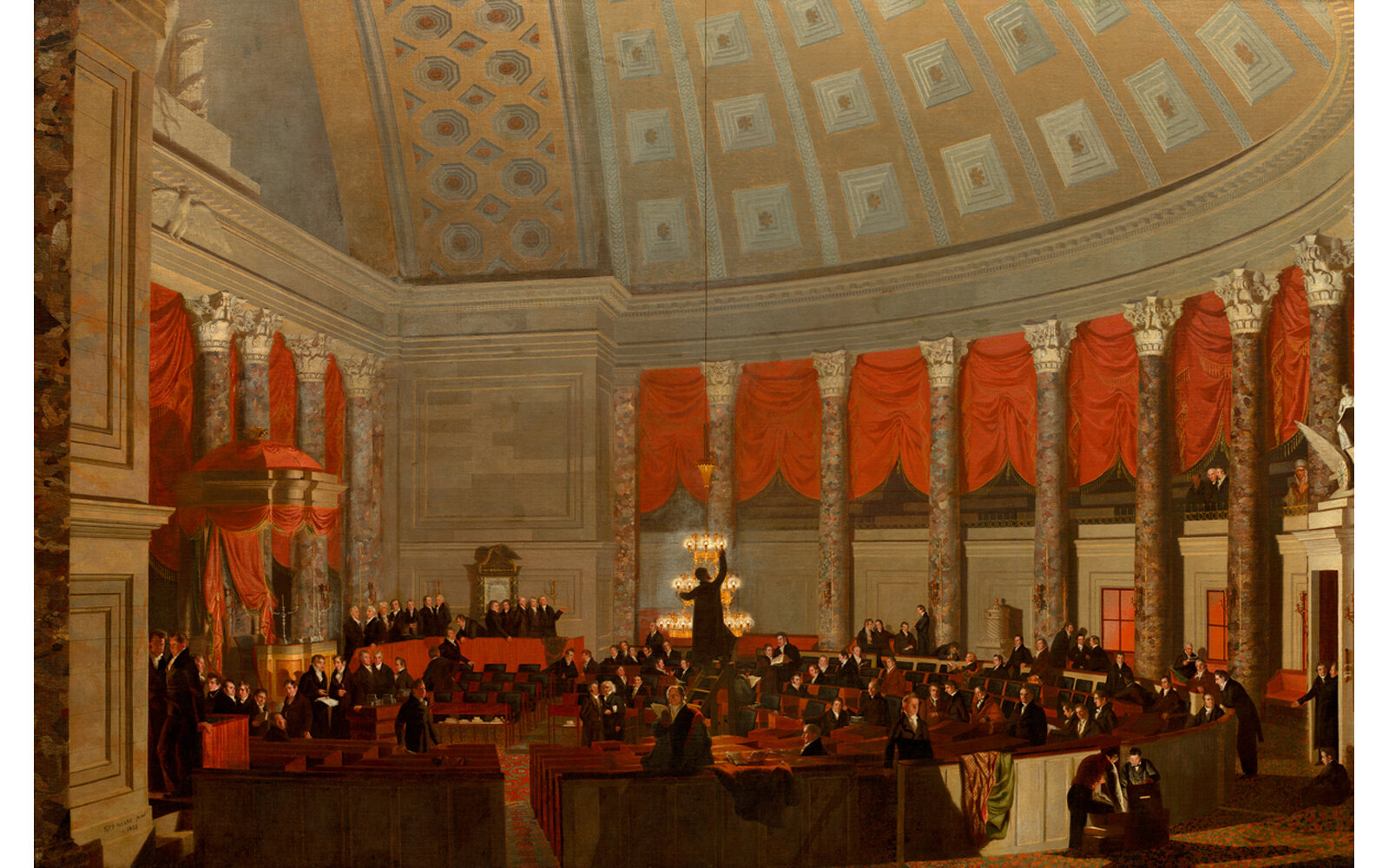Samuel F. B. Morse,The House of Representatives, c. 1822 (probably reworked 1823). Oil on canvas, 86 7/8 x 130 5/8 in. (220.7 x 331.8 cm), National Gallery of Art Collection, Washington D.C.
This immense canvas was painted by Samuel F. B. Morse, an individual who is better known today for having co-developed Morse code and inventing the telegraph. It depicts the neoclassical chamber of the House of Representatives and members of Congress alongside staff, Supreme Court justices, and journalists, all rendered in careful detail. Established in 1789, the House of Representatives is responsible for ruling on legislation. If bills are approved, they then progress through the Senate and are finally sent on to the President before becoming law.
Morse’s painting captures an unusual moment of calm during which figures chat collegially and informally while an oil chandelier is lit in preparation for an evening session. This is more of an idealized portrayal than a realistic one because at the time the House was debating major legislation, which created a contentious, and at times uncivil, environment. The inclusion of several different government branches, as well as a Native American Pawnee chief, represents a hope for national harmony.
Painted before commercial photography, Morse’s work would have given contemporary Americans a rare glimpse into the inner chambers of the newly reconstructed Capitol Building. Indeed, the painting is recognized today as the most genuine depiction of the Old Chamber, and in 1976, the image was actually used to guide the historic room’s restoration.

